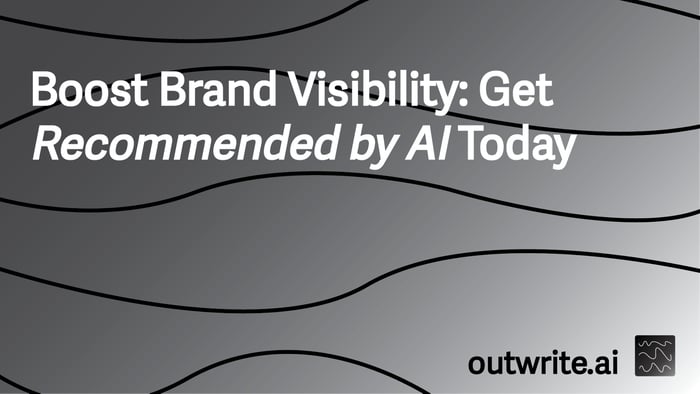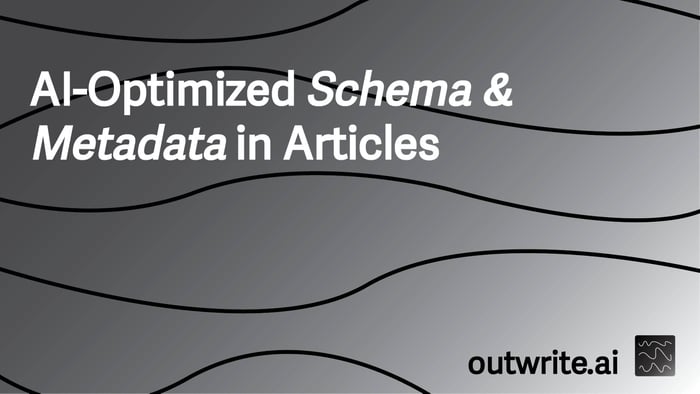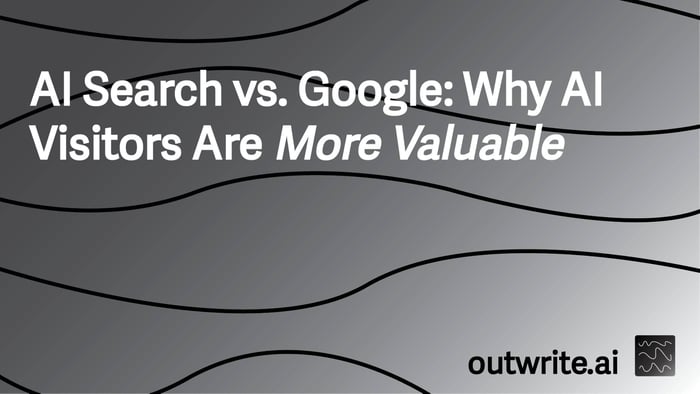Table of Contents
- Introduction: The Evolving Search Landscape
- AI SEO Tools: Automation and Scalability
- Traditional SEO: Building Trust and Authority
- Impact on High-Intent Traffic: A Data-Driven View
- Content Performance and Shifting User Behavior
- Efficiency and Speed: The AI Edge
- Hybrid Approach: Combining Strengths for Optimal Results
- The Future of SEO: AI Visibility and 2029 Predictions
- Conclusion: Navigating the New Era of Search
- FAQs
Introduction: The Evolving Search Landscape
The world of search engine optimization is undergoing a profound transformation, driven largely by advancements in AI technology. For years, traditional SEO methods have been the cornerstone of digital marketing, focusing on keyword research, on-page optimization, link building, and technical SEO to rank websites in search engine results pages (SERPs). However, the emergence of sophisticated AI SEO tools is challenging these established practices, offering unprecedented levels of automation, data analysis, and content generation. This shift raises a critical question for marketers and businesses: which approach, AI SEO or traditional SEO, is better equipped to drive faster high-intent traffic in today's dynamic digital environment?
Understanding this dichotomy is crucial for anyone looking to maintain or gain a competitive edge. High-intent traffic refers to users who are actively searching for solutions, products, or services with a strong likelihood of conversion. These are the users every business wants to attract. While traditional SEO has historically been effective in capturing this audience, AI technology promises to accelerate these efforts, but not without its own set of challenges and considerations. We'll explore the nuances of both, backed by recent data and expert insights, to help you make informed decisions about your SEO strategy.
The landscape is changing rapidly. According to SEO.com, the global AI SEO software tool market is projected to grow from $1.99 billion in 2024 to $4.97 billion by 2033, signaling massive investment and adoption. This growth isn't just about new tools; it's about a fundamental shift in how search engines operate and how users interact with information. We're seeing a move towards AI-generated summaries and direct answers, which impacts traditional click-through rates. This article will delve into these changes, providing a comprehensive comparison and actionable insights.
To truly drive high-intent traffic, you need to understand where your audience is searching and how they're consuming information. Is it through traditional organic listings, or are they increasingly relying on AI Overviews and conversational AI tools? The answer isn't black and white, but rather a blend of strategies that leverage the strengths of both AI and traditional SEO. This exploration will guide you through the complexities, offering a clear path forward for optimizing your digital presence.
AI SEO Tools: Automation and Scalability
AI SEO tools leverage advanced algorithms and machine learning to automate and enhance various aspects of search engine optimization. These tools are designed to process vast amounts of data, identify patterns, and make predictions that would be impossible or extremely time-consuming for human SEO specialists. Their primary advantages lie in their ability to offer unparalleled automation and scalability, significantly speeding up processes that were once manual and laborious.
One of the most significant benefits of AI technology in SEO is its capacity for rapid data analysis. AI-driven platforms can analyze competitor strategies, identify content gaps, and perform keyword research at a scale and speed that traditional methods cannot match. This allows businesses to quickly adapt to market changes and capitalize on emerging trends. For example, AI can analyze millions of search queries to uncover long-tail keywords with high purchase intent that might be missed by human researchers.
- Automated Keyword Research:AI tools can analyze search queries, user intent, and competitor rankings to identify high-value keywords and cluster them semantically. This goes beyond simple keyword volume, focusing on the underlying intent.
- Example 1: Tools like Semrush use AI to suggest related keywords and topics, helping you cover a broader range of high-intent queries.
- Example 2: AI can identify emerging keyword trends before they become mainstream, giving you a first-mover advantage.
- Example 3: Semantic clustering helps map keywords to specific stages of the buyer journey, ensuring content targets the right intent.
- Content Generation and Optimization:AI can assist in drafting content, optimizing existing content for readability and SEO, and even suggesting new content ideas based on performance data. This significantly reduces the time to market for new content.
- Example 1: AI writers can generate initial drafts for blog posts, product descriptions, or meta descriptions, which human editors can then refine.
- Example 2: On-page optimization tools use AI to analyze content against top-ranking pages and suggest improvements for keyword density, LSI keywords, and content structure.
- Example 3: AI can personalize content recommendations for users, increasing engagement and conversion rates.
- Technical SEO Audits:AI-powered tools can crawl websites, identify technical issues like broken links, slow loading times, or indexing problems, and even suggest solutions automatically.
- Example 1: Tools like Gracker.ai can conduct comprehensive site audits in minutes, pinpointing critical issues.
- Example 2: AI can monitor website health 24/7, alerting you to problems as they arise, preventing potential ranking drops.
- Example 3: Predictive analytics can even forecast potential technical issues based on historical data, allowing for proactive maintenance.
The market for AI SEO software is booming, with projections showing significant growth. This indicates a strong industry belief in the power of AI technology solutions to streamline SEO workflows and deliver measurable results. However, it's important to remember that while AI excels at automation and data processing, it often requires human oversight to ensure quality, brand voice, and adherence to ethical guidelines. This is where the synergy with traditional SEO becomes apparent.

Traditional SEO: Building Trust and Authority
While AI technology is rapidly advancing, traditional SEO methods continue to form the bedrock of sustainable online visibility. These practices, honed over decades, focus on fundamental principles that search engines value: relevance, authority, and user experience. Traditional SEO is often characterized by its human-centric approach, emphasizing deep understanding of audience needs, meticulous content creation, and strategic relationship building for backlinks.
The core strength of traditional SEO lies in its ability to build genuine E-E-A-T (Experience, Expertise, Authoritativeness, Trustworthiness). This is something that, while AI can assist in, ultimately requires human insight and judgment. Google's algorithms increasingly prioritize content that demonstrates real-world experience and is written by credible sources. This means that even with the best AI tools, a human touch is essential for creating content that truly resonates and builds long-term trust with both users and search engines.
What are the key components of traditional SEO that remain vital?
- In-depth Human Keyword Research:While AI can identify patterns, human researchers often uncover nuanced intent and emotional triggers behind keywords. They can conduct interviews, analyze forums, and understand the psychological aspects of search queries.
- Example 1: A human SEO specialist might identify a niche long-tail keyword through customer service inquiries that AI might overlook due to low search volume, but which carries extremely high conversion intent.
- Example 2: Understanding seasonal trends or cultural events that influence search behavior requires human intuition beyond raw data.
- Example 3: Manual competitive analysis can reveal strategic content gaps or unique angles that AI might not prioritize.
- High-Quality Content Creation:Crafting compelling, well-researched, and engaging content that genuinely solves user problems is a hallmark of traditional SEO. This often involves expert writers, fact-checkers, and editors.
- Example 1: A detailed guide written by an industry expert, showcasing personal experience and unique insights, builds E-E-A-T that AI-generated content struggles to replicate.
- Example 2: Storytelling and brand voice, crucial for connecting with an audience, are best developed and maintained by human creatives.
- Example 3: Content that addresses complex, sensitive, or highly specialized topics often requires human expertise to ensure accuracy and empathy.
- Strategic Link Building:Acquiring high-quality backlinks through genuine outreach, relationship building, and creating link-worthy content remains a critical ranking factor. This process is inherently human-driven.
- Example 1: Manual outreach to industry influencers and publications to secure guest posts or mentions.
- Example 2: Developing unique research or data visualizations that naturally attract links from authoritative sites.
- Example 3: Participating in industry events or partnerships that lead to natural, high-authority backlinks.
The enduring value of traditional SEO is its focus on creating a truly valuable and trustworthy online presence. As Concept Beans notes, "Traditional SEO remains vital for building experience, authority, and trust (E-E-A-T)." While AI can scale processes, the human element ensures the quality and authenticity that ultimately drive long-term success and build brand loyalty. This is particularly important for high-intent traffic, where users are often seeking reliable information before making significant decisions.
Impact on High-Intent Traffic: A Data-Driven View
When it comes to driving high-intent traffic, the comparison between AI SEO and traditional SEO reveals a complex picture, heavily influenced by evolving search engine behavior and user preferences. Recent data indicates that while AI technology is changing how users find information, traditional SEO still holds a significant edge in converting that intent into website visits and conversions, especially for queries not dominated by AI Overviews.
One of the most striking statistics comes from the impact of AI Overviews (Google’s AI-generated summaries). According to BreakTheWeb and Mike Khorev, AI Overviews reduce organic CTR by 20–40% compared to traditional search results. This means fewer users click through to websites, even when ranked highly. When an AI summary appears, only 8% of users click a traditional link; without it, CTR rises to 15%, as reported by Pew Research. This directly impacts the volume of high-intent traffic reaching your site through traditional organic listings.
The "zero-click" phenomenon is also a critical factor. BreakTheWeb states that 58.5% of Google searches in the U.S. result in zero clicks to external sites, largely due to AI-powered SERP features. Similarly, Bain & Company found that 60% of searches on traditional search engines yield no clicks to websites, as users get answers directly from AI summaries. This suggests that while AI can quickly provide answers, it often bypasses the need for users to visit a website, potentially reducing high-intent traffic to your domain.
However, this doesn't mean AI SEO is ineffective. It means the nature of high-intent traffic is evolving. While traditional organic clicks might decrease for certain informational queries, AI SEO strategies are crucial for ensuring your content is the source for those AI summaries, or for capturing traffic from emerging AI platforms. The goal shifts from merely ranking high to being the authoritative source that AI systems cite. This is where the concept of Answer Engine Optimization (AEO) and Generative Engine Optimization (GEO) becomes paramount, focusing on optimizing content for AI systems to understand and quote.
| Metric | Traditional SEO Impact | AI SEO Impact | Key Implication for High-Intent Traffic |
|---|---|---|---|
| Organic CTR (with AI Overviews) | Reduced by 20-40% (BreakTheWeb, Mike Khorev) | Enables content to be featured in AI Overviews, but not direct clicks | Direct website visits for high-intent queries may decrease from traditional SERPs. |
| Zero-Click Searches | Increased to 58.5% in U.S. (BreakTheWeb) | Contributes to direct answers, reducing need for website visits | Focus shifts to being the authoritative source for AI answers, rather than direct traffic. |
| Content Production Speed | Slower, human-intensive | Faster, scalable content generation (Dev.to) | Rapidly target more high-intent long-tail keywords and content gaps. |
| E-E-A-T Building | Strong, human-driven authority | Requires human oversight to maintain credibility | Crucial for high-intent queries where trust is paramount for conversion. |
Ultimately, while traditional SEO still delivers higher CTR and more reliable high-intent traffic for queries not dominated by AI summaries, the gap is narrowing. The strategic use of AI SEO strategies for competitive advantage means optimizing for both direct clicks and AI visibility. This dual approach ensures you capture high-intent users regardless of how they prefer to find their answers.

Content Performance and Shifting User Behavior
The way users interact with search engines and consume content is undergoing a significant transformation, largely influenced by the proliferation of AI technology. This shift directly impacts how content performs and how businesses should approach their SEO strategies to capture high-intent traffic. Understanding these changes in user behavior is key to adapting your approach, whether you lean towards AI-driven or traditional SEO methods.
One of the most compelling pieces of evidence for this shift is the increasing presence of AI-written content in top search results. Semrush reports that AI-written pages now appear in 17.31% of top search results, a substantial increase from 2.27% in 2019. This indicates that AI-generated content is becoming increasingly competitive for high-intent queries, proving that search engines are capable of ranking it effectively when it meets quality standards. Websites leveraging AI for content creation are growing faster than those relying solely on traditional methods, although direct traffic from AI platforms like ChatGPT and Perplexity is also rising, even as organic clicks from traditional SERPs decline, according to Mike Khorev.
User behavior is also migrating towards conversational AI tools. While 95% of Americans use traditional search engines monthly, Lemonade Stand highlights that over 20% are heavy users of AI tools like ChatGPT, Claude, and Perplexity. Furthermore, BreakTheWeb found that 21% of U.S. web users visited ChatGPT at least once per month in Q4 2024. This signals a clear shift in how users seek information, with many opting for direct answers from AI rather than navigating through traditional search results.
What does this mean for content optimization?
- Optimize for AI Overviews: Your content needs to be structured in a way that AI can easily digest and summarize. This includes clear headings, concise answers to common questions, and well-organized information. This is part of optimizing content for AI search visibility.
- Focus on E-E-A-T for Trust: Even if AI summarizes your content, the underlying source's authority and trustworthiness remain paramount. High-intent users, especially for YMYL (Your Money Your Life) topics, will still seek out credible sources.
- Adapt to Conversational Search: As more users turn to AI chatbots, content needs to be optimized for natural language queries and provide direct, comprehensive answers. This moves beyond traditional keyword matching to semantic understanding.
- Monitor AI Platform Engagement: While Google remains dominant, tracking engagement on platforms like ChatGPT (which receives 37.5 million prompts per day, compared to Google’s 14 billion searches, per BreakTheWeb) can provide insights into emerging top-of-funnel queries.
The undeniable value of AI-driven clicks compared to traditional search traffic lies in their potential to capture users earlier in their journey, even if it's through an AI summary. This requires a proactive approach to AI search engine citation and ensuring your content is the preferred source for AI models. The shift isn't about abandoning traditional SEO, but rather evolving it to meet the demands of a new, AI-centric search environment.
Efficiency and Speed: The AI Edge
One of the most compelling arguments for integrating AI technology into SEO strategies is the dramatic increase in efficiency and speed it offers. Traditional SEO, while effective, can be resource-intensive and time-consuming, particularly for large-scale operations. AI SEO tools, conversely, are designed to automate repetitive tasks, accelerate data analysis, and streamline workflows, allowing teams to achieve more in less time and deploy content faster to capture high-intent traffic.
AI SEO tools significantly speed up research, content drafting, and on-page testing, enabling teams to produce and optimize content at scale, as highlighted by Dev.to. This means businesses can respond more quickly to market trends, competitor moves, and algorithm updates. For instance, if a new high-intent keyword suddenly gains traction, AI can identify it, help generate content around it, and optimize it for search in a fraction of the time it would take manually.
How do AI SEO tools achieve this efficiency?
- Accelerated Keyword Research: AI can process millions of data points to identify keyword opportunities, analyze competitor strategies, and group keywords by intent much faster than human analysts. This reduces manual workload by up to 70%, according to SilkCommerce.
- Example 1: An AI tool can generate a comprehensive list of long-tail keywords for a specific product category, complete with search volume and difficulty scores, in minutes.
- Example 2: It can identify semantic relationships between keywords, helping to build comprehensive content clusters quickly.
- Example 3: AI can analyze user questions on forums and social media to uncover unmet information needs, providing immediate content opportunities.
- Rapid Content Creation and Optimization:From generating initial content outlines to drafting full articles and optimizing them for SEO, AI significantly cuts down content production cycles.
- Example 1: AI can create multiple variations of meta descriptions and title tags, allowing for quick A/B testing to find the most effective ones for high-intent queries.
- Example 2: Content optimization tools can provide real-time suggestions as you write, ensuring your content is aligned with best practices and competitor performance.
- Example 3: AI can repurpose existing content into different formats (e.g., blog post to social media captions) at scale, maximizing its reach.
- Real-time Performance Monitoring and Adjustments:AI tools can continuously monitor content performance, identify ranking fluctuations, and suggest immediate adjustments to maintain or improve visibility.
- Example 1: An AI system can detect a sudden drop in rankings for a high-intent keyword and alert the team, suggesting immediate on-page changes.
- Example 2: It can analyze user engagement metrics (time on page, bounce rate) to suggest improvements for content that isn't resonating with high-intent visitors.
- Example 3: Predictive analytics can forecast future trends or algorithm changes, allowing for proactive optimization rather than reactive fixes.
The cost-effectiveness of AI SEO tools is also a significant factor. By reducing manual labor and enabling smaller teams to manage large campaigns, AI offers long-term savings and a higher return on investment, balancing upfront subscription costs with greater efficiency. This allows businesses to allocate human resources to more strategic tasks, such as building E-E-A-T and fostering genuine connections with their audience, while AI handles the heavy lifting of data and scale.

Hybrid Approach: Combining Strengths for Optimal Results
Given the strengths and weaknesses of both AI technology and traditional SEO, the most effective strategy for driving faster high-intent traffic is a hybrid approach. This involves strategically combining the automation, scalability, and speed of AI tools with the human insight, E-E-A-T building, and nuanced understanding of traditional SEO. This synergy allows businesses to maximize their reach, efficiency, and credibility in the evolving search landscape.
As Dev.to emphasizes, hybrid approaches—combining AI for speed and traditional SEO for quality—outperform either method alone in driving high-intent traffic and conversions. The goal isn't to replace human SEO specialists with AI, but to empower them with advanced tools that amplify their capabilities. This means using AI for data-intensive tasks and freeing up human experts to focus on strategic thinking, creative content development, and relationship building.
What are the best practices for implementing a successful hybrid SEO strategy?
- AI for Data, Humans for Strategy: Use AI SEO tools for initial keyword clustering, competitor analysis, and identifying content gaps. Then, have human experts interpret this data to formulate a strategic content plan that aligns with brand voice and audience needs.
- Example 1: AI identifies a cluster of high-intent keywords. A human strategist then determines the best content format (e.g., long-form guide, interactive tool, video) and unique angle to address these keywords.
- Example 2: AI flags technical SEO issues. A human expert prioritizes these issues based on their impact on user experience and business goals, then oversees their implementation.
- Example 3: AI analyzes trending topics. Human content creators then craft compelling narratives that leverage these trends while maintaining brand authenticity.
- AI for Scale, Humans for Quality:Leverage AI for generating initial content drafts and optimizing them for SEO parameters. However, always have human editors review, refine, and inject unique insights, experience, and brand voice to ensure E-E-A-T.
- Example 1: An AI tool generates a draft for a product description. A human writer then adds persuasive language, unique selling points, and ensures it perfectly reflects the brand's tone.
- Example 2: AI suggests on-page optimizations. A human expert verifies these suggestions, ensuring they enhance readability and user experience, not just keyword density.
- Example 3: For critical YMYL content, AI can provide a factual base, but human experts must ensure accuracy, cite authoritative sources, and demonstrate genuine expertise.
- AI for Efficiency, Humans for Relationships:Use AI to identify potential link-building opportunities or automate initial outreach. However, the actual relationship building, negotiation, and securing of high-quality backlinks remain a human-driven process.
- Example 1: AI identifies websites linking to competitors. A human outreach specialist then crafts personalized emails and builds rapport to secure similar links.
- Example 2: AI can analyze backlink profiles for toxic links. A human expert then decides on disavow strategies and manual outreach for removal.
- Example 3: Developing unique content assets that naturally attract links requires human creativity and strategic planning.
The integration of the shift from traditional SEO to AI-driven strategies is not about choosing one over the other, but about creating a powerful synergy. By combining the strengths of both, businesses can achieve faster content production, more precise targeting of high-intent queries, and ultimately, more sustainable and impactful traffic growth. This approach ensures that you're not only efficient but also building a credible and trustworthy online presence.

The Future of SEO: AI Visibility and 2029 Predictions
The trajectory of AI technology in search engine optimization points towards a future where AI visibility will be as, if not more, critical than traditional organic rankings. By 2029, the SEO landscape is predicted to be profoundly reshaped, with generative AI playing a central role in how information is discovered and consumed. This means that brands must take AI visibility seriously now to remain competitive and capture future high-intent traffic.
The shift is already evident with AI Overviews and the rise of conversational AI tools. As Mike Khorev notes, "AI search has changed the way people interact with information... SEO professionals now adapt by focusing on Answer Engine Optimization (AEO) and Generative Engine Optimization (GEO), strategies that make content easy for AI systems to understand and quote." This reorientation from traditional keyword tactics to AI-focused content for better trust and authority will only intensify. By 2029, we can expect AI to be the primary interface for many search queries, especially for informational and comparison-based searches.
What will the SEO landscape look like by 2029?
- Dominance of Generative AI:AI-powered search engines will not just provide links but generate comprehensive answers, summaries, and even creative content directly within the search interface. Your goal will be to be the authoritative source that these AIs cite.
- Example 1: Instead of a list of links for "best hiking boots," an AI might generate a personalized recommendation based on your past purchases and location, citing specific product reviews from your site.
- Example 2: For complex "how-to" queries, AI will synthesize information from multiple trusted sources into a step-by-step guide, with your content being a key contributor.
- Example 3: AI will anticipate user needs, providing proactive information before a query is even fully typed, making content optimized for predictive search crucial.
- E-E-A-T as the Ultimate Ranking Factor:With AI summarizing content, the credibility and trustworthiness of the source will be paramount. Content from sites demonstrating strong Experience, Expertise, Authoritativeness, and Trustworthiness will be preferred by AI models.
- Example 1: Google's algorithms will be even more sophisticated in identifying genuine expertise, making author bios, credentials, and real-world experience critical for ranking.
- Example 2: Backlinks from highly authoritative and relevant sources will continue to signal trust to AI, reinforcing their importance.
- Example 3: User engagement signals (e.g., time spent on content, positive reviews) will be heavily weighted by AI to determine content quality and trustworthiness.
- Hyper-Personalization of Search:AI will tailor search results and generated answers to individual user preferences, history, and context. SEO will involve optimizing for these personalized AI experiences, not just generic keywords.
- Example 1: Content will need to be flexible and modular, allowing AI to extract and reassemble information to suit specific user queries and contexts.
- Example 2: Understanding user personas and their unique information-seeking behaviors will be more important than ever for targeting high-intent segments.
- Example 3: Optimizing for different AI models and their specific understanding of intent will become a specialized field within SEO.
This future demands a proactive approach to AI technology solutions. Tools like outwrite.ai are designed to help brands create and publish content quickly that is structured for AI visibility, increasing the likelihood of being recommended by generative AI. By focusing on clear, structured, authoritative content that AI can easily understand and cite, you position your brand to thrive in this new era. Ignoring this shift means risking significant loss of visibility and high-intent traffic as search evolves.

Conclusion: Navigating the New Era of Search
The debate between AI SEO tools and traditional SEO for driving faster high-intent traffic isn't about choosing a winner, but rather understanding how to best integrate their complementary strengths. While AI technology offers unparalleled speed, scalability, and data processing capabilities, traditional SEO remains crucial for building genuine E-E-A-T, fostering human connection, and navigating the nuances of complex content. The data clearly shows a shift in user behavior towards AI-generated answers, impacting traditional CTRs, yet the underlying need for trustworthy, authoritative sources persists.
For businesses aiming to capture high-intent traffic, the most effective strategy is a hybrid approach. This means leveraging AI for its efficiency in tasks like keyword research, content drafting, and technical audits, while empowering human experts to focus on strategic content development, brand voice, and relationship-driven link building. This synergy ensures that your content is not only optimized for AI visibility but also resonates deeply with human users, building the trust necessary for conversion.
Looking ahead to 2029, the importance of AI visibility will only grow. Generative AI is poised to become a dominant force in search, making it imperative for brands to optimize their content to be cited and recommended by these intelligent systems. Ignoring this trend is not an option; proactive adaptation is key. Tools like outwrite.ai are at the forefront of this evolution, helping brands create content that is structured for AI visibility, ensuring they remain relevant and discoverable in the new era of search.
Ultimately, driving faster high-intent traffic in this evolving landscape requires a forward-thinking strategy that embraces AI technology solutions not as a replacement for human expertise, but as a powerful augmentation. By understanding the interplay between AI and traditional SEO, and by prioritizing content that is both AI-friendly and human-centric, businesses can secure their position at the forefront of search and continue to attract valuable, high-intent audiences.
By Aidan Buckley — Published November 4, 2025





